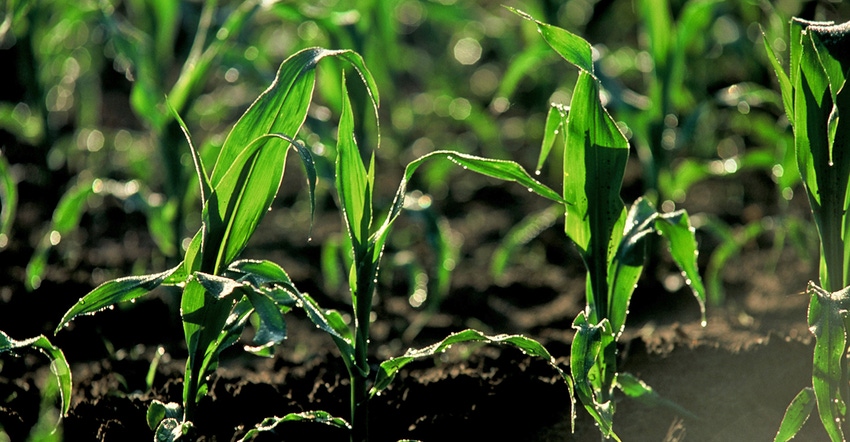April 30, 2019

By Joel Ransom
As you prepare and plant corn fields, take care to give the seedlings the best chance to emerge at the same time.
Seedlings that emerge more than a week later than neighboring seedlings will not “catch up” and will yield much less than if they emerged at the same time. In extreme cases, they will not produce a cob and will act as an expensive weed. Additionally, corn does not compensate as well as many other crops when there are gaps in the row.
The optimum scenario for corn is that every seed that is planted emerges on the same day; there are no skips and doubles; and the plant-to-plant spacing is uniform.
Even with the best of conditions and equipment, achieving perfect uniformity of emergence is unlikely.
A few years ago, a number of area and county Extension agents assessed plant stand uniformity and measured its impact on yield in farmers’ fields in the north. They found that within a planter width, averaged over all the fields evaluated, the most variable row yielded 9 bushels per acre less than the least variable row.
The most common problem causing the variability was variability in emergence date and not skips and doubles. In fact, doubles were rarely observed.
When measuring the yield loss on a plant basis, skips were the most impactful, followed by plants emerging 11 to 17 days after the early emerging seedlings. Plants next to a skip could add 10% greater yield when compared to normal spacing, but this was much less than the 50% needed to totally compensate for the lost plant. Plants next to late emergers were able to add 5% greater yield, but again, they could not completely compensate for the loss of production by plants emerging later.
Although there is no management practice that can ameliorate uneven stands after emergence, determining the cause of poor uniformity can be a useful learning exercise for future years. On average, most farmers will plant 40 crops in their lifetime. Learning from each crop is important to a successful operation. (I learned last year not to plant a corn hybrid trial after sugarbeets unless I manage for fallow syndrome!)
When evaluating stand uniformity, expect a few skips that are caused by non-viable seeds (the range in germination for most commercial seeds lots is 90% to 95%). Doubles can be traced back to a planter problem. Although doubles generally do not result in a yield reduction, they are not an efficient use of seed.
Determining what caused poor uniformity in emergence timing may not be easy, but the following are some known causes that should be considered:
• Differences in access to soil moisture by the seeds. Cloddy soils (tilled when too wet), dried or compacted soils (from too much tillage), non-optimal seeding depth, improper press-wheel tension, hair pinning of residues that results in the seed being placed next to crop residue rather than soil, and sidewall compaction are a few potential reasons why seeds have access to differing amounts of moisture during germination. Excessive speed while planting can impact the uniformity in planting depth, especially in the larger planters.
• Soil crusting. Crusting most often results from tilled soils high in silt that received a substantial rain after planting.
• Difference in soil temperature. Small difference in the temperature that the seed encounters can be caused by difference in depth of seeding and the amount of residue that is retained directly above the seed.
• Seed lot vigor. Although it is not common to be overly concerned about the quality of the corn seed that is planted, seed lots with poor vigor can potentially cause variability in emergence timing. This is likely to be a concern only when there has been additional stress during germination, like cold soils.
Ransom is a North Dakota State University Extension agronomist.
You May Also Like




